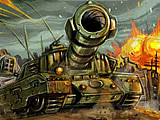

‘Operation Citadel’, ordered by Hitler in March, was an attempt to cut off the Kursk salient with two giant pincers from north and south. The Russian post-Stalingrad advance had created a vast bulge (or salient) around the town of Kursk, jutting some 90 miles into the German lines, which, at once, provided a spearhead for the Soviet Army, or a trap should a German pincer movement succeed. In Frieser’s words, it was ‘only a preventive attack with limited aims within an overall defensive strategy.’ Hitler and the German High Command now recognised that the best that could be hoped for on the Eastern Front was stabilisation. The German Kursk offensive was not, compared with previous operations, ambitious. But it was failure to prevent the subsequent Soviet advance at Kursk that threatened German hopes of holding on to the bulk of their conquests. The battle took place some six months after the surrender of German forces at Stalingrad had dealt a massive blow to Hitler’s aim of complete victory on the Eastern Front. Was Prokhorovka really a bloody stalemate or, as has recently been argued by German historian Karl-Heinz Frieser, a clear German victory – a conclusion backed by British historian Ben Wheatley in his analysis of the photographs taken immediately after the battle by the Luftwaffe? The strategic context Both have argued that the Battle of Brody, in June 1941, involved more tanks, and was of greater importance, putting an end to Hitler’s hopes of defeating the Soviet Union in a short war. It was certainly one of the greatest tank battles of the war, but the claim that it was the greatest has been challenged by American historian David Glantz and Russian historian Valeriy Zamulin.

A rare aerial colour photo of German armour moving into action on the first morning of the Battle of Kursk.


 0 kommentar(er)
0 kommentar(er)
